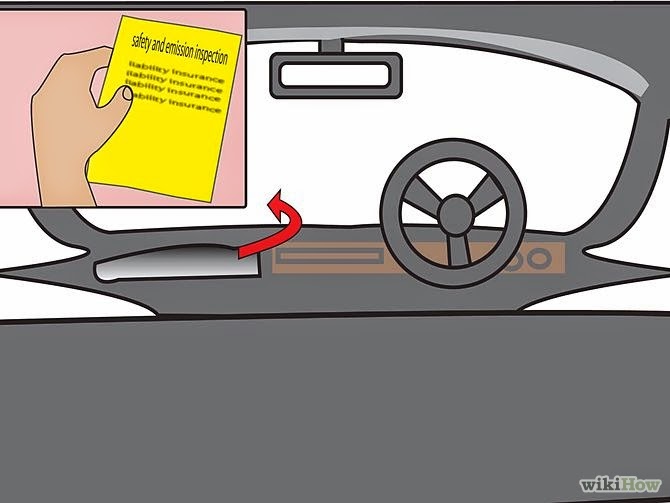Check your tire pressure!
Right, I know that’s important—and yet I’ve no idea how to put that thingy on my tire. (Do I even own one?) I watch the girl in The Fast and the Furious with slight awe.
We’re powerful women, we juggle jobs, sports, cooking, kids, and even
our cars. Maintenance can be intimidating, but it’s not as hard as we
think. Here are 7 tips that every girl can do to make sure her car is in
tip-top shape.
1. REFILL WINDSHIELD WIPER FLUID
Sure, you’re supposed to have this “taken care of” for you with your
oil change. But especially if you live in an area with lots of snow,
it’s important to make sure you don’t run out. If the light turns on
showing you need more, open the hood and look for the washer indicator
to know where to add the fluid. It’s also smart to have a jug of it in
your trunk for emergency refills. You can go through quite a lot of it
driving in a snow storm.
Car maintenance isn’t overwhelming with these quick tips from Fuelzee.
2. REPLACE YOUR WIPER BLADES
More than once I’ve had someone ride with me and ask “How can you
drive with blades that bad?!” When you feel tension looking out the
windshield or you find yourself squinting because the wiper blades are
doing a poor job, it’s time to change them out. Don’t stress yourself
out wondering which ones to buy. Most auto stores actually have a guide
for you! The packaging usually comes with directions right on it too. If
you’re nervous changing them out for the first time, just ask for help
in an auto store.
3. CHANGE A FLAT TIRE
Flats happen. It’s part of life. So avoid the anxiety you’ll feel
when you hear that ominous “bump, bump, bump” and instead make sure
you’re ready ahead of time. Do you have a spare tire or a temporary
“donut” in your car? If not, get one pronto. Also, get a tire jack and
iron. Changing a tire is not complicated, but having someone run through
it ahead of time with you (even if that someone is YouTube) can make you feel more calm in the moment.
4. GIVE A JUMPSTART
Maybe you left the lights on, maybe your battery is just old. Sooner
or later you’ll be faced with a dead battery. Make sure the problem
really is the battery first. Check the headlights and other
interior lights and see if they are dim. Check the manual for the
location of the battery. (Some cars put them in the back.)
- Park the cars facing each other and turn off everything in them both.
- Connect the positive terminal (+) with the red wire on the dead car.
- Connect the positive terminal (+) with the red wire on the car with a good battery.
- Connect one black clamp to the negative (-) terminal of the good battery.
- Connect the other black clamp to a piece of grounded metal on the
dead car. (Look for a bolt where the thick negative cable from the
battery connects to the car. If you can’t see this, usually a nut, bolt
or other protruding shiny metal will work.) You may see a small spark
when you connect to a good ground.
- If you can’t find any nuts or bolts to connect it to, you may
connect it to the negative (-) post of the dead battery. (This risks
igniting hydrogen gas, so it’s last choice.)
- Start working car.
- Start car with dead battery and let it charge about 5 minutes.
5. CALL A TOW TRUCK
Do you have AAA? Does your insurance company offer roadside
assistance? Many car insurance companies offer this for just a few
dollars a month.
If your car breaks down, turn on
your hazard lights and get your car safely off the road. Then call for
assistance or a tow truck service. Take a few minutes (yes, right now!)
to make sure you program the number for a tow truck or your roadside
assistance into your phone. Also, take time to put in your mechanic’s
name and address. If you don’t have a mechanic, think about where you’d
want your car taken in a breakdown. Home? Your brother’s house? A
mechanically-minded friend?
6. CHECK YOUR OIL
Oil changes are so economical these days it’s not really a bargain to
do it ourselves. However, you should still know how to check your oil.
And where to add more oil if your engine is running hot and you need
some.
7. CHECK YOUR TIRE PRESSURE
Tire pressure is important. If your tires are under-inflated or over-inflated you’ll drain your gas mileage and risk accidents. DMV.org
has a great explanation of PSI and how to make sure your tires are
correctly inflated. Always carry a tire gauge in your car. Also consider
carrying a can of air, just incase you can’t get to a station or don’t
have the change for the machine in a pinch.
If you don’t know how to do all seven of these maintenance tips,
now’s a great time to learn! Let 2015 be the year you take power of your
car maintenance. You’ll feel incredibly proud knowing you’re able to
care for your car on your own.
Thanks .
Please Always Visit Our site at http://tentangautomotive.blogspot.com


























.jpg)









































